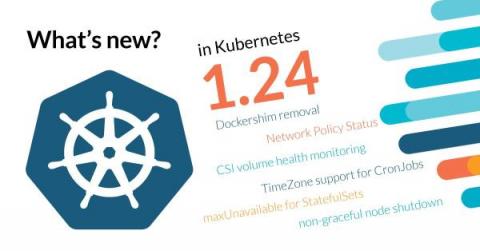Kubernetes 1.24 - What's new?
Kubernetes 1.24 is about to be released, and it comes packed with novelties! Where do we begin? Update: Kubernetes 1.24 release date has been moved to May 3rd(from April 19th). This release brings 46 enhancements, on par with the 45 in Kubernetes 1.23, and the 56 in Kubernetes 1.22. Of those 46 enhancements, 13 are graduating to Stable, 14 are existing features that keep improving, 13 are completely new, and 6 are deprecated features.











